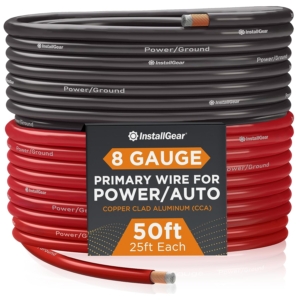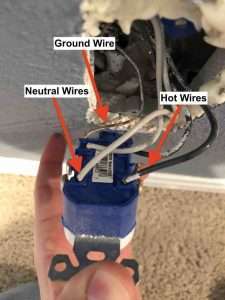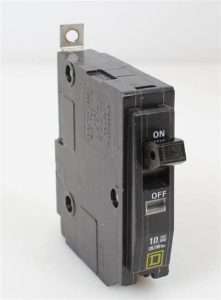Types of Electric Wires: Applications and Selection Criteria
Electric wires play a vital role in modern electrical systems, transmitting electrical power and signals from one point to another. These days one might say how will we survive without it? Electrical systems are made up of conductive materials such as copper, aluminum, or other metals, surrounded by insulation to prevent electrical currents from escaping and causing potential dangers. This blog will explore the different electrical wire types and uses.
Copper Wires Copper is one of the most common and popular materials used for electric wires due to its high conductivity and low resistance. Copper wires are ideal for transmitting electrical power and signal over long distances and are commonly used in homes, businesses, and other types of electrical systems.
Applications of Copper Wires Some of the common applications of copper wires include:
- Building wiring for homes and commercial buildings
- Power distribution in substations and electrical panels
- Wiring for electrical appliances, such as refrigerators and air conditioners
- Data and communication wiring for computer networks
Advantages and Disadvantages of Copper Wires Advantages of Copper Wires:
- High conductivity, making them ideal for transmitting electrical power over long distances
- Low resistance, reducing the potential for electrical losses
- Durable and flexible, making them easy to work with
- Resistant to corrosion and oxidation, ensuring long-term reliability
Disadvantages of Copper Wires:
- More expensive than aluminum wires
- Can be affected by fluctuations in temperature, causing changes in resistance
- Susceptible to environmental factors, such as moisture and humidity
Aluminum Wires Aluminum wires are another popular choice for electrical systems due to their low cost and high conductivity. Although not as conductive as copper, aluminum is lighter and easier to work with, making it a popular choice for wiring in homes and businesses.
Applications of Aluminum Wires Some of the common applications of aluminum wires include:
- Building wiring for homes and commercial buildings
- Power distribution in substations and electrical panels
- Wiring for electrical appliances, such as refrigerators and air conditioners
Advantages and Disadvantages of Aluminum Electric Wires Advantages of Aluminum Wires:
- Lower cost compared to copper wires
- Lightweight and easy to work with
- Good conductivity, making them suitable for transmitting electrical power and signals
Disadvantages of Aluminum Wires:
- Lower conductivity compared to copper wires, which can lead to higher resistance and electrical losses
- Susceptible to corrosion and oxidation, which can impact their longevity and reliability
- Require special connectors and terminations to ensure safe and reliable connections
High-Temperature Wires High-temperature wires are designed to withstand extreme temperatures, making them ideal for use in high-heat applications such as motors, generators, and other types of electrical equipment. They are made up of specialized materials that are designed to resist heat and provide reliable performance in high-temperature environments.
Applications of High-Temperature Wires Some of the common applications of high-temperature wires include:
- Wiring for motors and generators
- High-heat applications, such as furnace and kiln wiring
- Aerospace and military applications where high-temperature tolerance is required
Advantages and Disadvantages of High-Temperature Wires Advantages of High-Temperature Wires:
- Designed to withstand high temperatures, making them ideal for use in high-heat applications
- Reliable performance in extreme temperature environments
- Durable and long-lasting, ensuring reliable performance over time
Temperature Wires:
- Higher cost compared to traditional electrical wires
- Specialized installation and handling procedures may be required
- May have lower conductivity compared to traditional electrical wires, which can impact performance in some applications
Shielded Wires Shielded wires are designed to protect against electromagnetic interference (EMI) and radio frequency interference (RFI). They are often used in applications where electrical signals need to be transmitted in noisy environments or where signals may be vulnerable to interference from other electrical devices.
Applications of Shielded Electric Wires Some of the common applications of shielded wires include:
- Computer networks and other data communication systems
- Medical equipment and other electronic devices that require EMI protection
- Aerospace and military applications where EMI protection is critical
Advantages and Disadvantages of Shielded Wires Advantages of Shielded Wires:
- Protect against EMI and RFI, ensuring reliable performance in noisy environments
- Ideal for use in sensitive electronic applications where EMI protection is critical
- Durable and long-lasting, ensuring reliable performance over time
Disadvantages of Shielded Electric Wires:
- Higher cost compared to traditional electrical wires
- Specialized installation and handling procedures may be required
- May have lower conductivity compared to traditional electrical wires, which can impact performance in some applications
Selection Criteria When selecting electric wires, there are several factors to consider, including cost, performance requirements, and environmental factors. Some of the key selection criteria include:
- Conductivity and resistance: Copper wires are the most conductive, followed by aluminum and other metal wires. Consider the resistance of the wire, as lower resistance can result in improved electrical performance.
- Cost: Copper wires are more expensive than aluminum and other metal wires, so cost may be a factor in your decision-making process.
- Environmental factors: Consider the environment in which the wire will be used, as some materials may be susceptible to corrosion or oxidation in certain environments.
- Performance requirements: Consider the specific requirements of your application, including heat tolerance, EMI protection, and other performance criteria.
Wire types and sizes are important factors to consider when selecting the right electrical wire for your application. Wire types refer to the type of material used to make the wire, while wire sizes refer to the diameter of the wire and its ability to carry electrical current.
- Copper: The most common type of electrical wire, copper is a highly conductive material that is durable and long-lasting. Copper wires are available in solid and stranded varieties and are used in a wide range of applications, from residential wiring to high-voltage transmission.
- Aluminum: A less expensive alternative to copper, aluminum wires are commonly used in electrical power distribution. However, aluminum is less conductive than copper and may be more susceptible to corrosion and oxidation, which can impact performance over time.
- Steel: Steel wires are often used in applications where mechanical strength is important, such as in suspension bridges and other structures. Steel wires are also used in high-temperature applications where copper or aluminum would not be suitable.
- Teflon: Teflon-coated wires are used in high-temperature and high-performance applications, such as in aerospace and military applications. Teflon provides a non-stick surface that resists heat, chemicals, and other environmental factors, making it ideal for use in challenging environments.
Wire Sizes
- Gauge: Wire size is typically measured in American Wire Gauge (AWG), which is a standardized system for measuring the diameter of electrical wires. The lower the AWG number, the thicker the wire and the greater its ability to carry electrical current.
- Amperage: Wire size also affects the amperage capacity of the wire, which refers to the amount of electrical current that a wire can safely carry. Larger wires can carry more electrical current than smaller wires, so it is important to choose the right wire size based on the specific requirements of your application.
Types of Wiring in Old Houses
In older homes, there are several types of wiring that may have been used, including:
- Knob and Tube Wiring: This type of wiring was commonly used in homes built before 1950 and consists of individual wires that are run through ceramic tubes or wrapped around porcelain knobs. This type of wiring is no longer considered safe for use in modern homes, as the insulation on the wires can deteriorate over time and pose a fire hazard.
- Fabric Insulated Wiring: This type of wiring was used in homes built between the 1930s and 1950s and consists of wires covered in fabric insulation. This type of wiring is not as common as knob and tube wiring, but can still be found in some older homes.
- Romex Wiring: This type of wiring is a newer type of electrical wiring that consists of multiple wires encased in a plastic sheath. This type of wiring is still commonly used in modern homes today and is considered safer and more reliable than knob and tube or fabric insulated wiring.
- Aluminum Wiring: Aluminum wiring was used in homes built between the 1960s and 1970s and was considered a cost-effective alternative to copper wiring. However, aluminum wiring is more susceptible to corrosion and may pose a fire hazard, so it is no longer commonly used in modern homes.
If you live in an older home, it is important to have your wiring inspected by a licensed electrician to ensure that it is safe and up to code. If you have knob and tube, fabric insulated, or aluminum wiring, you may need to have it updated or replaced to ensure the safety of your home. In some cases, it may be necessary to rewire the entire home to ensure that it is safe and up to code.
Conclusion
I hope this blog article has been helpful. If you have additional questions and want to get in contact with GGR Home Inspections please send us a note, text, or call.






Pingback: 4 Point Inspection Form - GGR Home Inspections